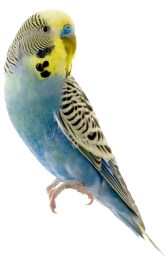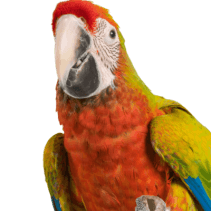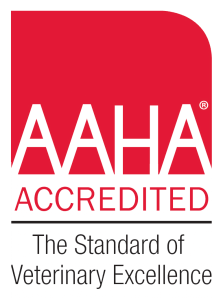WHAT WILL THE BIRD VETERINARIAN DO?

If possible, bring the bird in its cage so the bird veterinarian may assess the bird’s environment, food, feeding arrangement and some of the droppings on the bottom of the cage.
If this is the bird’s first visit to the the veterinarian then a lot of information will be gathered initially pertaining to you and more importantly, your bird.
The age, sex, species, previous background the bird may have had, diet and length of current ownership will be recorded in the bird’s permanent medical record.
Your veterinarian may discuss or give you information regarding proper diet and care of your particular species of bird.
Ensuring a Stress-Free Visit to the Avian Veterinarian
Visiting the veterinarian can be a stressful event for a bird but it is necessary to ensure good health. We recognize how traumatic the experience can be and so we do everything possible to minimize stress to our bird patients. We appreciate your cooperation with us to make visits as stress-free as possible. If at any time during your visit you feel that your bird is becoming too stressed or not doing well, please alert the veterinarian or a team member.
We have a variety of techniques to secure your bird in a towel for examination and we will work slowly and cautiously with your bird to find the method that is the least stressful. For the safety of team and your bird, we will almost always have a trained team member restrain your bird for the veterinarian rather than have you hold them.
Please let us know, up front, if your bird has any severe anxiety issues with toweling or restraint, or if there are special “tricks” for securing your bird for examination that will
make it work as smoothly as possible. In some cases of severe anxiety, we may also recommend the use of midazolam, a mild sedative.
Bird Toweling/How to Handle Birds
Jennifer Bloss:
Today I’m going to show you how to catch your bird and hold it in a towel. That’s always very important to be able to catch your bird because you may need to transport it to the veterinarian. Or if your bird injures itself or gets out of his cage, you want to be able to handle your bird correctly so you don’t hurt it. It’s very important not to constrict the chest of the bird when you’re holding it.
Jennifer Bloss:
And the reason for this is because they lift up their keel bone to breathe and that draws air into the air sacs which then is pushed through their lungs. So if they can’t lift up their keel to breathe because you’re holding them too tight around their chest, they won’t be able to breathe.
Jennifer Bloss:
It’s very important when you are transporting your bird to the veterinarian or wherever you need to go with your bird that you use a carrier, something like this. Because it’s very important that they’re not one, flying around in the car, if you get in a car accident you’re going to lose your bird. But two, also, when you go into the veterinary clinic you need your bird to be protected. You don’t want him just sitting on your shoulder like this or inside your coat because there may be lots of other animals in the waiting area which may startle your bird and cause him to fly off your shoulder. And then your bird may become injured.
Jennifer Bloss:
A good way to capture your bird in a towel is have the towel already on the table and place your bird on top of it, right next to your body. And then very quickly you’re just going to cover him like that and then reach down and grab for his head. His head is right here and I’m holding him underneath his neck. And you can see that I’m not compressing his chest at all. And the only part that’s actually holding him is just my thumb and my forefinger, which is underneath his chin. And now you can examine him or put him back in his cage or put him in his carrier.
Jennifer Bloss:
To hold Hermie, we used a large bath towel. But for smaller birds like parakeets or finches or cockatiels, I would use either a thinner hand towel like this. And what works really good for the really small birds is a really light dishcloth like this.
The Bird Examination

From the time you walk into the exam room, your veterinarian will observe the bird, first in its carrier and then while it is out of the cage interacting with you or the veterinarian. Attitude, posture, feathering, vocalizing, droppings, and physical condition are all noted. The bird’s weight is recorded. The bird will then be gently restrained and a complete physical exam performed. Any abnormalities of the eyes, ears, nares, mouth, skin, feathers, beak, wings, legs, nails, vent, chest, and abdomen will be noted.
The beak and nails may be trimmed with a nail trimmer, small scissors or Dremel rotary tool, depending on the size of the bird. Wings are clipped at this time if requested by the owner. An AVID microchip can also be placed in the bird’s breast muscles if requested. If present, the leg band will be checked and can be removed if requested or necessary.
Will any lab tests be done on my Bird?
Your veterinarian will discuss the need for diagnostic testing with you depending on your bird’s age, species, medical history, and what has been found on the examination.
Wellness testing will provide further information important in assessing your pet’s condition. Some tests are performed routinely on apparently healthy birds to monitor the current state of health of the bird and keep abreast of gradual changes to their health.
Blood Testing – Blood testing can include hematology and serum biochemical. Hematology checks the health of blood cells and can help detect certain types of infections. The serum biochemistry checks fo function and damage of some key vital organs (liver, kidneys, pancreas).
Specific Pathogen Testing – Additional tests can be used to detect infection with
Chlamydophila (causes Psittacosis), polyomavirus, circovirus (Psittacine beak and feather disease), and many other pathogens of concern. Not all of these tests may be necessary and your veterinarian can help you select those most pertinent to your situation.
Fecal Analysis – Microscopic examination of the feces allows detection of internal parasites. This is only necessary in certain species under specific circumstances or when there are gastrointestinal symptoms present. As a general rule, most pet birds kept exclusively indoors,do not need this test performed.
Microbiological Testing – Stains of feces or oral/cloacal swabs can be used to determine the presence of abnormal bacteria and yeasts. Depending upon the findings additional tests such as a culture and sensitivity may be needed to determine the species of bacteria or yeasts and the proper treatment.


